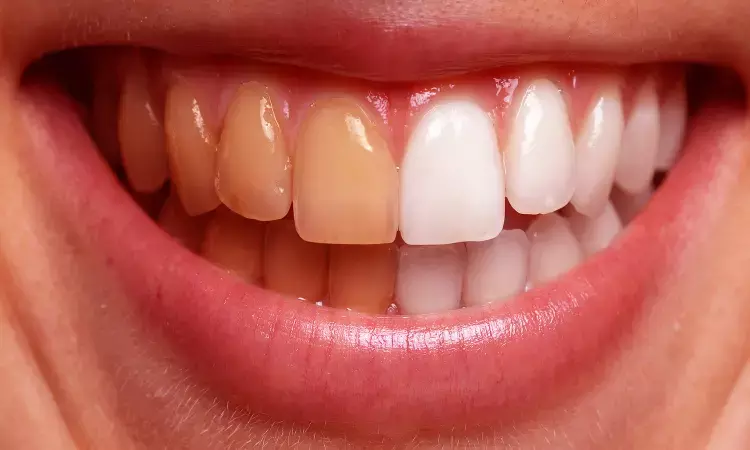- Home
- Medical news & Guidelines
- Anesthesiology
- Cardiology and CTVS
- Critical Care
- Dentistry
- Dermatology
- Diabetes and Endocrinology
- ENT
- Gastroenterology
- Medicine
- Nephrology
- Neurology
- Obstretics-Gynaecology
- Oncology
- Ophthalmology
- Orthopaedics
- Pediatrics-Neonatology
- Psychiatry
- Pulmonology
- Radiology
- Surgery
- Urology
- Laboratory Medicine
- Diet
- Nursing
- Paramedical
- Physiotherapy
- Health news
- Fact Check
- Bone Health Fact Check
- Brain Health Fact Check
- Cancer Related Fact Check
- Child Care Fact Check
- Dental and oral health fact check
- Diabetes and metabolic health fact check
- Diet and Nutrition Fact Check
- Eye and ENT Care Fact Check
- Fitness fact check
- Gut health fact check
- Heart health fact check
- Kidney health fact check
- Medical education fact check
- Men's health fact check
- Respiratory fact check
- Skin and hair care fact check
- Vaccine and Immunization fact check
- Women's health fact check
- AYUSH
- State News
- Andaman and Nicobar Islands
- Andhra Pradesh
- Arunachal Pradesh
- Assam
- Bihar
- Chandigarh
- Chattisgarh
- Dadra and Nagar Haveli
- Daman and Diu
- Delhi
- Goa
- Gujarat
- Haryana
- Himachal Pradesh
- Jammu & Kashmir
- Jharkhand
- Karnataka
- Kerala
- Ladakh
- Lakshadweep
- Madhya Pradesh
- Maharashtra
- Manipur
- Meghalaya
- Mizoram
- Nagaland
- Odisha
- Puducherry
- Punjab
- Rajasthan
- Sikkim
- Tamil Nadu
- Telangana
- Tripura
- Uttar Pradesh
- Uttrakhand
- West Bengal
- Medical Education
- Industry
Clinical shade matching best if carried out immediately after dental procedure: Study

Researchers have recently found out that short-term dental dehydration produces clinically unacceptable changes in tooth color, hence clinical shade matching must be done within the first two minutes of any clinical procedure, as published in the Journal of Dentistry.
Dental restorations should mimic sound tooth structures in terms of color and optical properties especially in the anterior region. However, closely matching natural teeth with a restoration can be one of the most challenging procedure in restorative dentistry. Shade matching includes color determination, color communication with dental lab and color reproduction with dental restoration for indirect techniques or color determination and selection of the appropriate material and application method when using direct techniques. Therefore, color selection is the first critical step in the restoration procedures and should be carried out properly.
Hence, Javier Ruiz-López and colleagues from the Department of Optics, Faculty of Science, University of Granada, Granada, Spain conducted the study to determine in-vivo chromatic and whiteness changes produced by short-term dental dehydration.
The authors measured the spectral reflectance of 452 upper incisors (226 centrals and 226 laterals) of 113 participants using a spectroradiometer at baseline and after short-term dehydration (minutes 2, 4, 6, 8 and 10). CIE L*a*b* color coordinates (L*, a*, b*, C*ab and hab) and whiteness index for dentistry (WID) were calculated.
Color differences were computed and interpreted based on their respective 50:50% perceptibility (PT) and acceptability thresholds (AT). Statistical analysis was performed using the related samples Wilcoxon signed-rank test.
The following results were observed-
a. L* showed an increasing trend with dehydration, while a*, b*, C*ab and hab have a decreasing tendency.
b. All chromatic coordinates showed statistically significant differences (p < 0.003) at each interval of dehydration compared with baseline, except a* for all teeth.
c. For and values were higher than PT after 2 min of teeth dehydration and higher than AT after 6 and 8 min, respectively.
d. The percentage of teeth exceeding corresponding PT was higher than 50% after 2 min.
e. WID index increased with dehydration time, while whiteness differences were clinically perceptible after 4 min.
f. Statistically significant differences were found for WID between all dehydration intervals (except 8−10 min).
g. The percentage of teeth exceeding whiteness PT was higher than 50% after 6 min of teeth dehydration.
Hence, it was concluded that "Short-term dental dehydration produces clinically unacceptable changes in tooth color and clinically perceptible increase in tooth whiteness level and clinical shade matching must be done within the first two minutes of any clinical procedure that requires precise chromatic determination but implies a risk of tooth dehydration."
Dr. Nandita Mohan is a practicing pediatric dentist with more than 5 years of clinical work experience. Along with this, she is equally interested in keeping herself up to date about the latest developments in the field of medicine and dentistry which is the driving force for her to be in association with Medical Dialogues. She also has her name attached with many publications; both national and international. She has pursued her BDS from Rajiv Gandhi University of Health Sciences, Bangalore and later went to enter her dream specialty (MDS) in the Department of Pedodontics and Preventive Dentistry from Pt. B.D. Sharma University of Health Sciences. Through all the years of experience, her core interest in learning something new has never stopped. She can be contacted at editorial@medicaldialogues.in. Contact no. 011-43720751
Dr Kamal Kant Kohli-MBBS, DTCD- a chest specialist with more than 30 years of practice and a flair for writing clinical articles, Dr Kamal Kant Kohli joined Medical Dialogues as a Chief Editor of Medical News. Besides writing articles, as an editor, he proofreads and verifies all the medical content published on Medical Dialogues including those coming from journals, studies,medical conferences,guidelines etc. Email: drkohli@medicaldialogues.in. Contact no. 011-43720751


